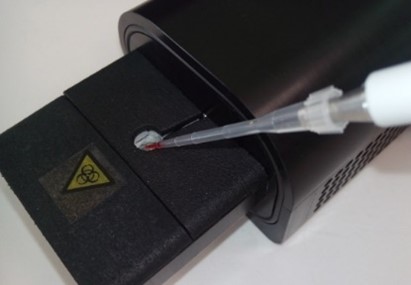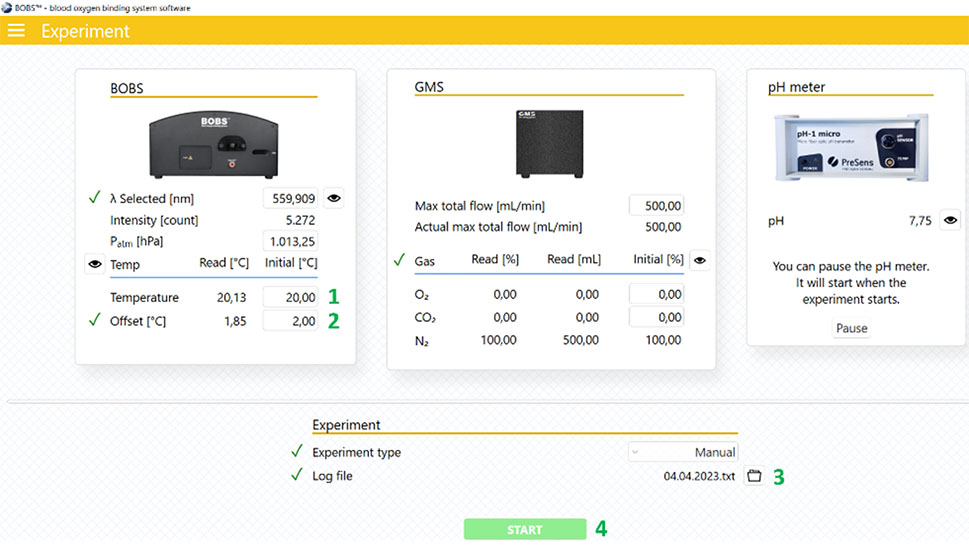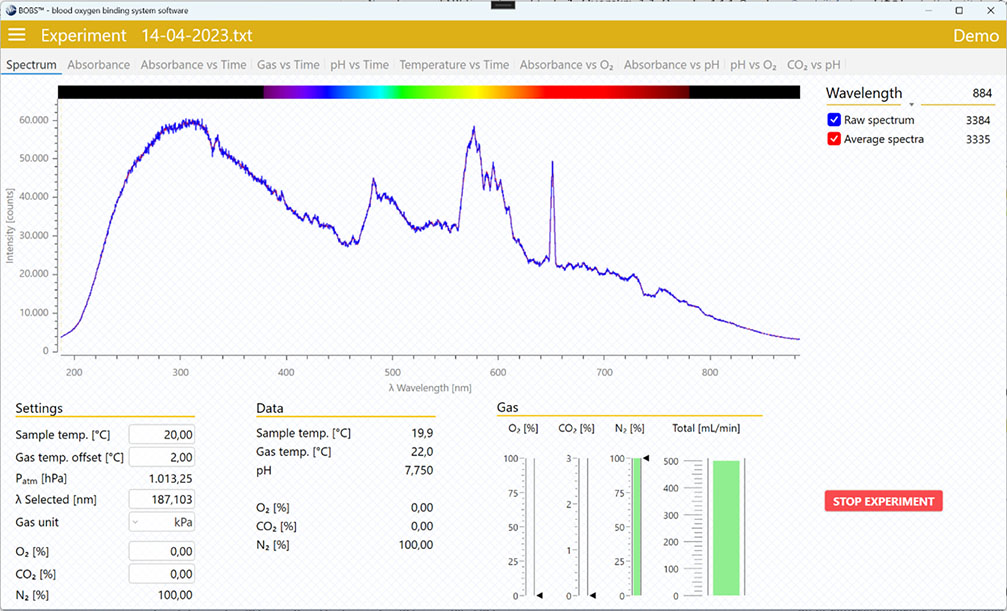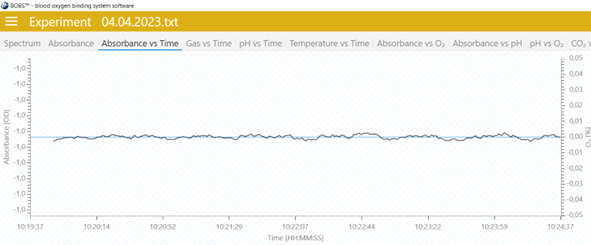FAQ
How to find the offset temperature?
Quick reference – Finding the right temperature offset
Minute volumes of blood sample require incoming gas with a relative humidity close to 100%, to prevent desiccation or condensation. The BOBS™ instrument regulates gas humidity by modifying the temperature of the gas humidifier independently from the sample holder. To find the optimal temperature offset between the gas humidifier and the sample holder at your experimental temperature, follow the below steps.
- Power on the BOBS™ instrument and allow to warm-up for about 1-2 hours.
- Load a sample or water droplet onto the sample holder, using the same volume as for the final experiment.

NOTE: If you are not using the pH-sensor, the entrance port for the pH sensor inside the sample holder must be covered with a small piece of tape to avoid air draft and any condensation forming inside the pH sensor tube to run back into your sample and dilute it. - Insert the sample holder and screw it tightly in place.
- Go to the main menu and select ´Experiment´.
- Set the desired experimental temperature (1) and an approximate starting offset temperature (2, see table for recommended offset values to start with).
|
Sample temperature [°C] |
Humidifier temperature [°C] |
Offset [°C] |
|
20 |
20 |
0,0 |
|
37 |
39 |
2.0 |

- Select the log file (3) and start an experiment (4). Ensure gas is turned on and at full flow but NOT exceeding 500 ml/min.
- In the “Spectrum” tab select a wavelength at which you will monitor your absorbance.

- Go to the “Absorbance vs time” tab and monitor the absorbance for about 10-15 min.

- If the absorbance does not significantly change, the sample is stable and neither dries up or collects condense water. In this case you are ready to go. Continue with step 12.
- If the absorbance:
- Increases: the sample likely collects water, which reduces the light transmission. In this case decrease the offset temperature by about 0.5°C to reduce the humidity of the incoming gas
- Decreases: the sample likely dries out, which reduces the sample droplet thickness and causes the light transmission to increase. In this case increase the offset temperature by about 0.5°C to increase the humidity of the incoming gas.
- Increases: the sample likely collects water, which reduces the light transmission. In this case decrease the offset temperature by about 0.5°C to reduce the humidity of the incoming gas
- Keep adjusting the temperature offset till you reach a stable absorbance for about 10-15 min, or for the same time as you will run your actual experiment. You may also fine-tune the temperature offset in <0.5°C.
- Stop the temperature offset experiment and use the determined temperature offset for your actual experiment run at the identical experimental temperature and conditions.